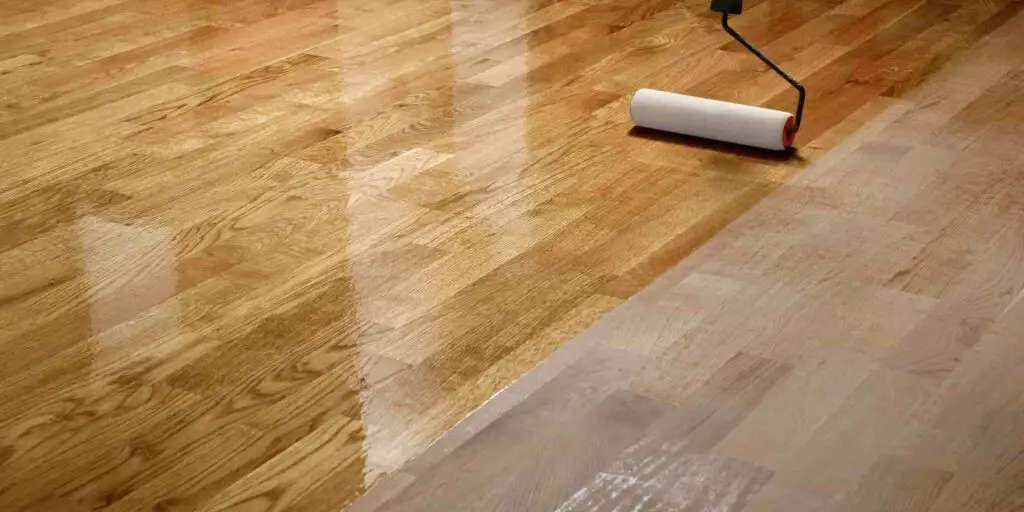Hardwood floors are a classic, timeless option for any home. They can add warmth and beauty to your interior. Unfortunately, they can also become slippery if not cared for properly.
If you’ve noticed that your hardwood floors have become slick and slippery, there are some easy solutions to help rectify the issue.
Dull Finish or Wax Buildup
The most common cause of slippery hardwood floors is a dull finish or wax buildup on the surface of the wood.
Over time, these two factors can make it difficult to walk on them without feeling like you’re going to slip and fall. Dull finishes often happen when the finish isn’t reapplied regularly enough or is applied too thinly.
A wax buildup usually occurs when too much wax is used during cleaning, resulting in a slippery residue being left behind on the flooring surface.
Types of Finish
The type of finish on your wood floor could be to blame for its sudden slipperiness. If your floor has a wax or oil-based finish, then it is more likely to become slick over time as dirt accumulates on top of the layer.
Wax finishes can also wear down quickly when exposed to direct sunlight or too much foot traffic.
On the other hand, if your floor has a polyurethane finish then it is less likely to become slick due to dirt buildup because the finish provides an extra layer of protection against wear and tear.
Re-coating and Stripping

The best way to fix slippery hardwood floors is by re-coating and/or stripping the finish off of them.
For re-coating, you will need to completely remove any existing floor finish and apply several coats of fresh polyurethane or polyacrylic coating with a brush or roller over the entire surface of the flooring.
This will ensure that your hardwood floors are not only safe but also look as good as new!
If wax buildup is an issue, then you may need to strip off all of the existing wax with a stripper solution before applying fresh new layers of polyurethane or polyacrylic coating onto your hardwood flooring.
Condition of Wood
If you’ve noticed that your wood floors are starting to look dull or worn down, then this could also contribute to their becoming slippery as well.
This is because older wood floors tend to have lost some of their protective sealant which makes them more susceptible to moisture and dirt accumulation that can cause them to become slick over time.
To fix this issue, consider refinishing or resealing your wood floors in order to restore their natural luster and reduce any potential slipperiness caused by age or wear-and-tear damage.
Related Topic: What Is Prefinished Hardwood Flooring: Ultimate Guide
Preventative Measures You Can Take To Avoid Slippery Floor Surfaces
To prevent slippery surfaces from occurring in the future it’s important that you keep up with regular maintenance on your hardwood floors such as refinishing them every few years and using appropriate cleaning solutions for daily cleaning needs.
Additionally, installing mats at entryways can help reduce dirt build-up and decrease slipping hazards in high-traffic areas as well as add an extra layer of protection from slips and falls due to wet shoes coming into contact with your hardwood surfaces!
Cleaning Frequency
Keeping up with regular cleaning can help prevent slipperiness from occurring in the first place. Vacuum regularly to remove dirt and debris that accumulates on top of the finish and mop weekly with a mild soap solution to keep it looking its best.
In addition, avoid using harsh chemicals such as bleach or ammonia during cleaning as this could strip away some of the protective sealant applied to your hardwood floors and make them more prone to becoming slippery over time.
Conclusion
Slippery hardwood floors can be dangerous for anyone who lives in your home especially young children who may not be able to catch themselves before falling down!
But don’t despair there are some simple solutions available that will help bring back the safety and durability of your beautiful hardwoods.
By re-coating and/or stripping off any existing finishes, applying fresh layers of polyurethane or polyacrylic coatings, and taking preventative measures like installing mats at entryways, you can ensure that your hardwoods remain safe while looking their best!
Related Topic: How To Remove Pet Stains From Hardwood Flooring
FAQs
How do you get rid of slippery floors?
To safely and effectively reduce slip hazards on floors, use an anti-slip floor treatment. This can help to reduce the coefficient of friction, making walkways and stairs less slippery.
In addition to treatments, consider matting and floor coverings, improving drainage, and cleaning more frequently with non-wax solutions. With these solutions in place, you can create a safer home or workplace environment.
How do you make wood not slippery?
Non-slip solutions for wood surfaces can range from paint to specialized sealants and non-slip tape. Painting your wood surface with a rough, semi-gloss, or matte finish paint will make the surface easier to grip.
For a more heavy-duty approach, you can apply one layer of sealant before adding a non-slip solution such as anti-skid particles.
If you want something more easily removable and adjustable, you might try using non-slip tape. This is a more budget-friendly option that can provide you with some much-needed traction in those slippery moments!



1 thought on “Why Are My Hardwood Floors Suddenly Slippery?”